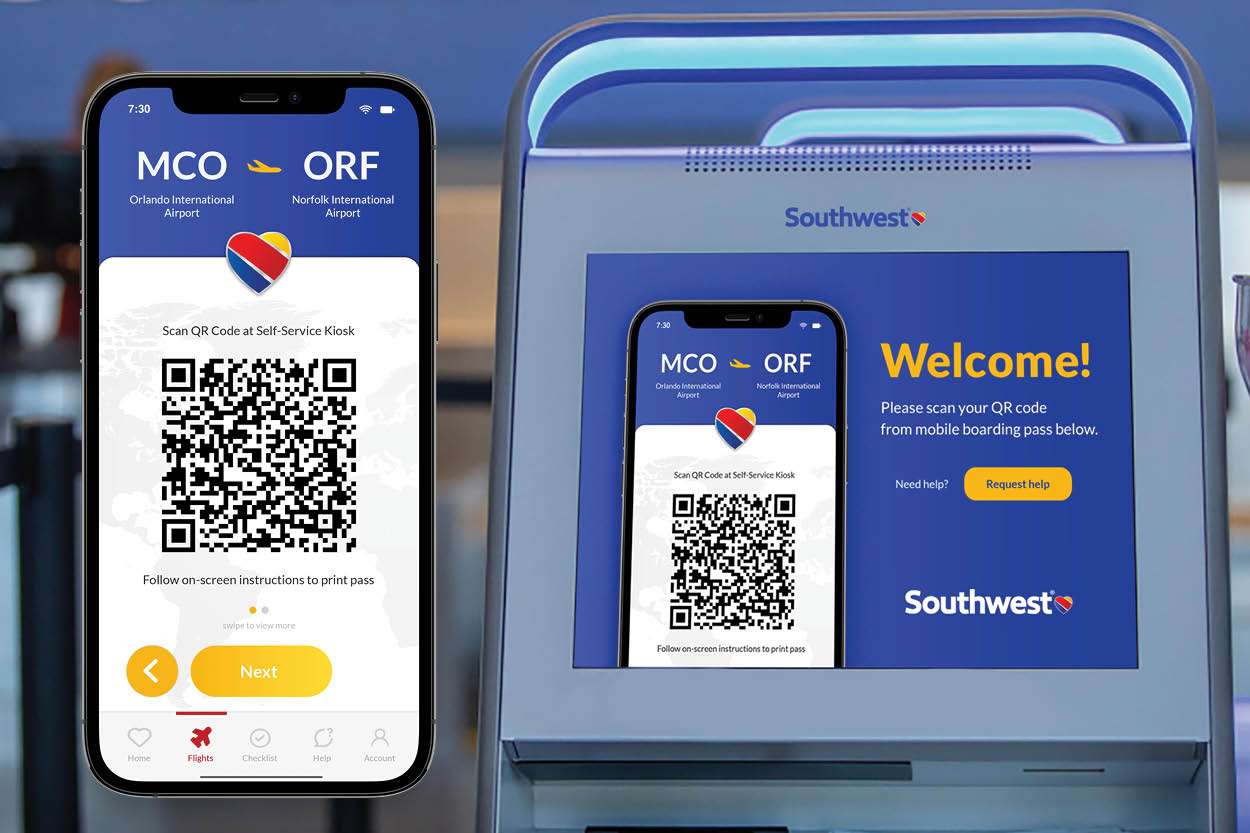
Southwest Boarding Pass
Junior project
Sprint 2020
Southwest Airlines is trying to improve their boarding process through a new mobile app. My goal was to examine the pain points in the current process, innovate and create a more efficient strategy, and test these ideas on potential users. Currently, printed documents are provided by airlines when checking in for a flight. They are accessible by mobile app or browser on smartphones, as well. QR codes can also be emailed to passengers and can then be scanned by attendants.
I found that more people use their smartphones because it’s easier to access, and one less thing to worry about when traveling.
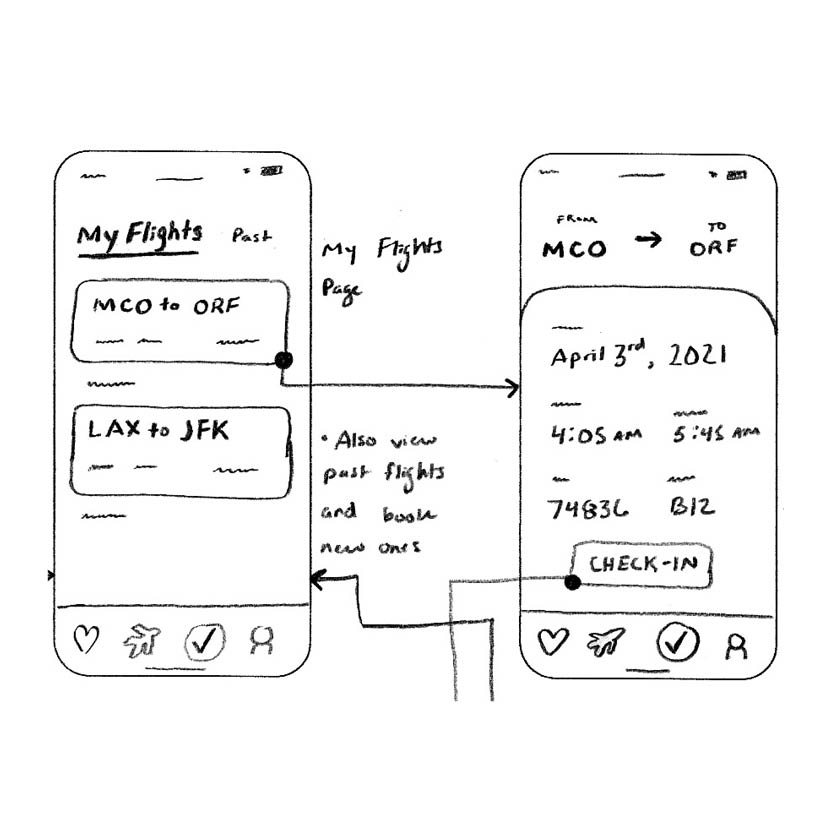 Through research and user interviews, I focused on creating an app that provides a personalized step-by-step experience for each traveler.
Through research and user interviews, I focused on creating an app that provides a personalized step-by-step experience for each traveler. 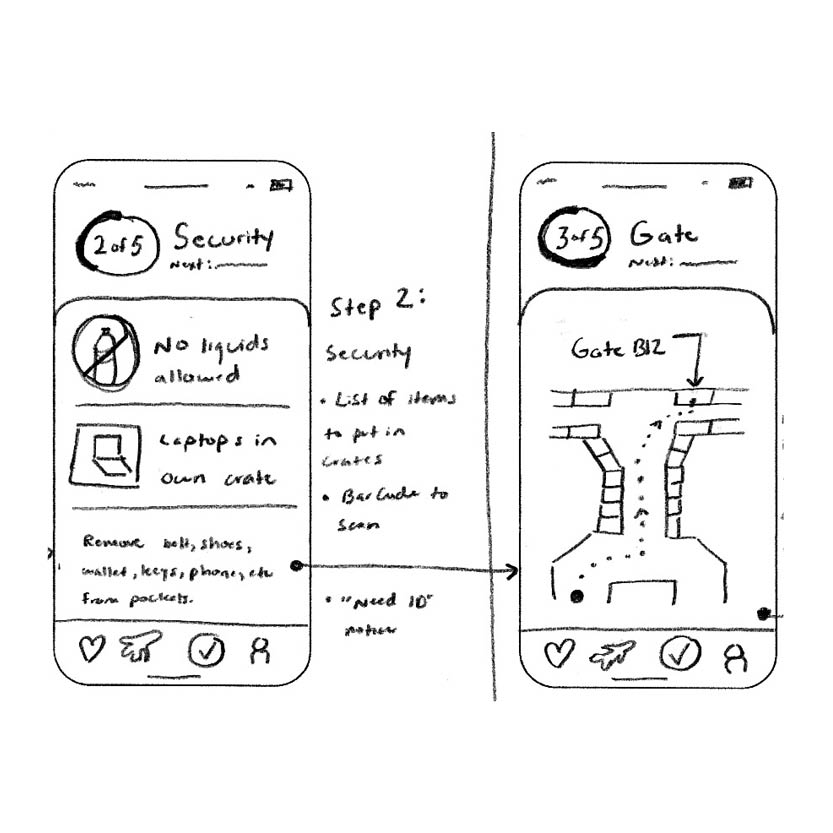 The app is mainly meant for inexperienced fliers but can help anyone who travels by plane.
The app is mainly meant for inexperienced fliers but can help anyone who travels by plane. 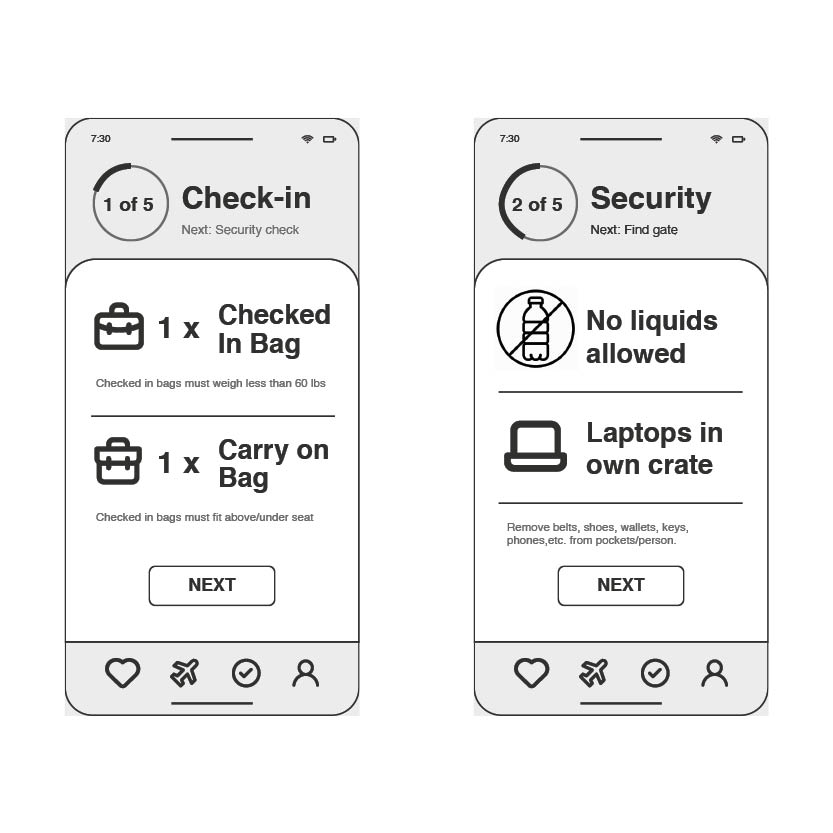 The main feature is the progress bar, which shows which step you’re on and what’s up next. Here, I also begin to organize information and showing the more detailed steps within each stage.
The main feature is the progress bar, which shows which step you’re on and what’s up next. Here, I also begin to organize information and showing the more detailed steps within each stage. 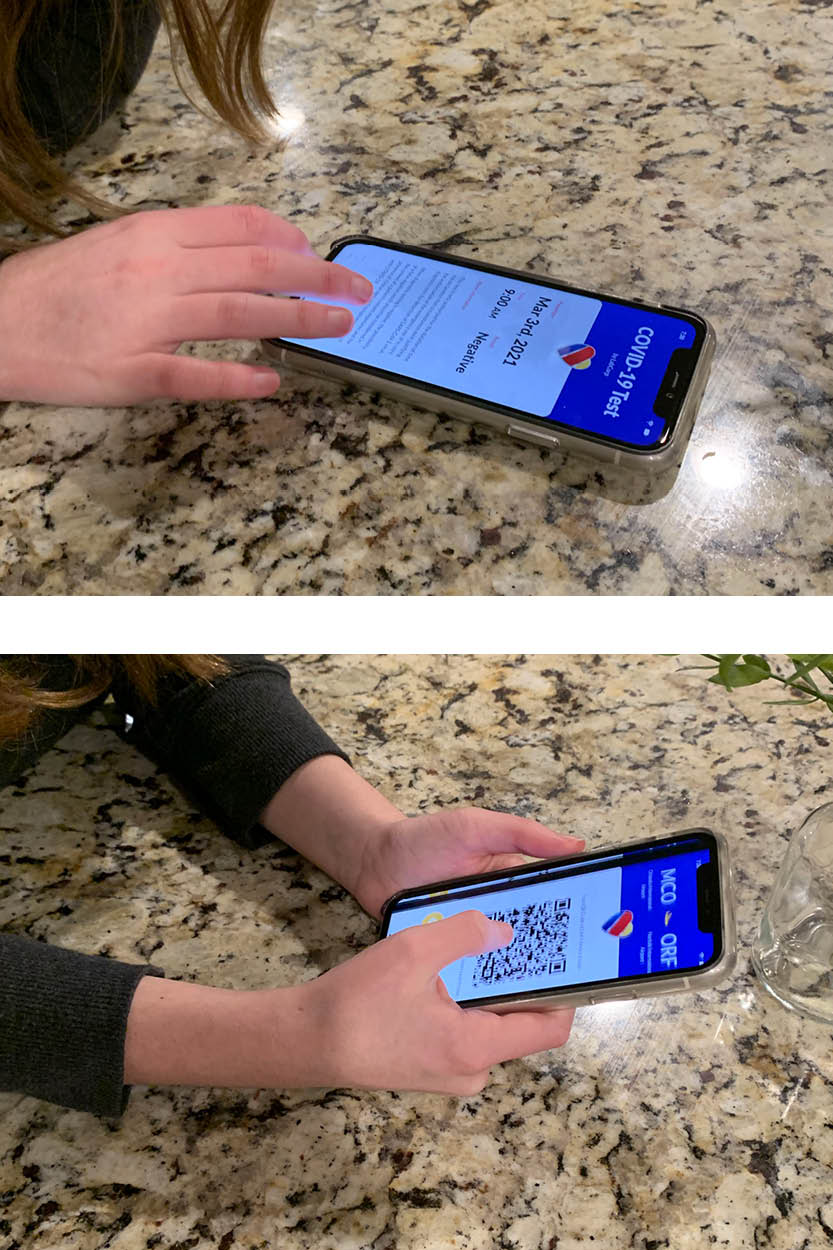 I conducted some user testing on key screens and found insights that led to future rounds of iteration.
I conducted some user testing on key screens and found insights that led to future rounds of iteration. 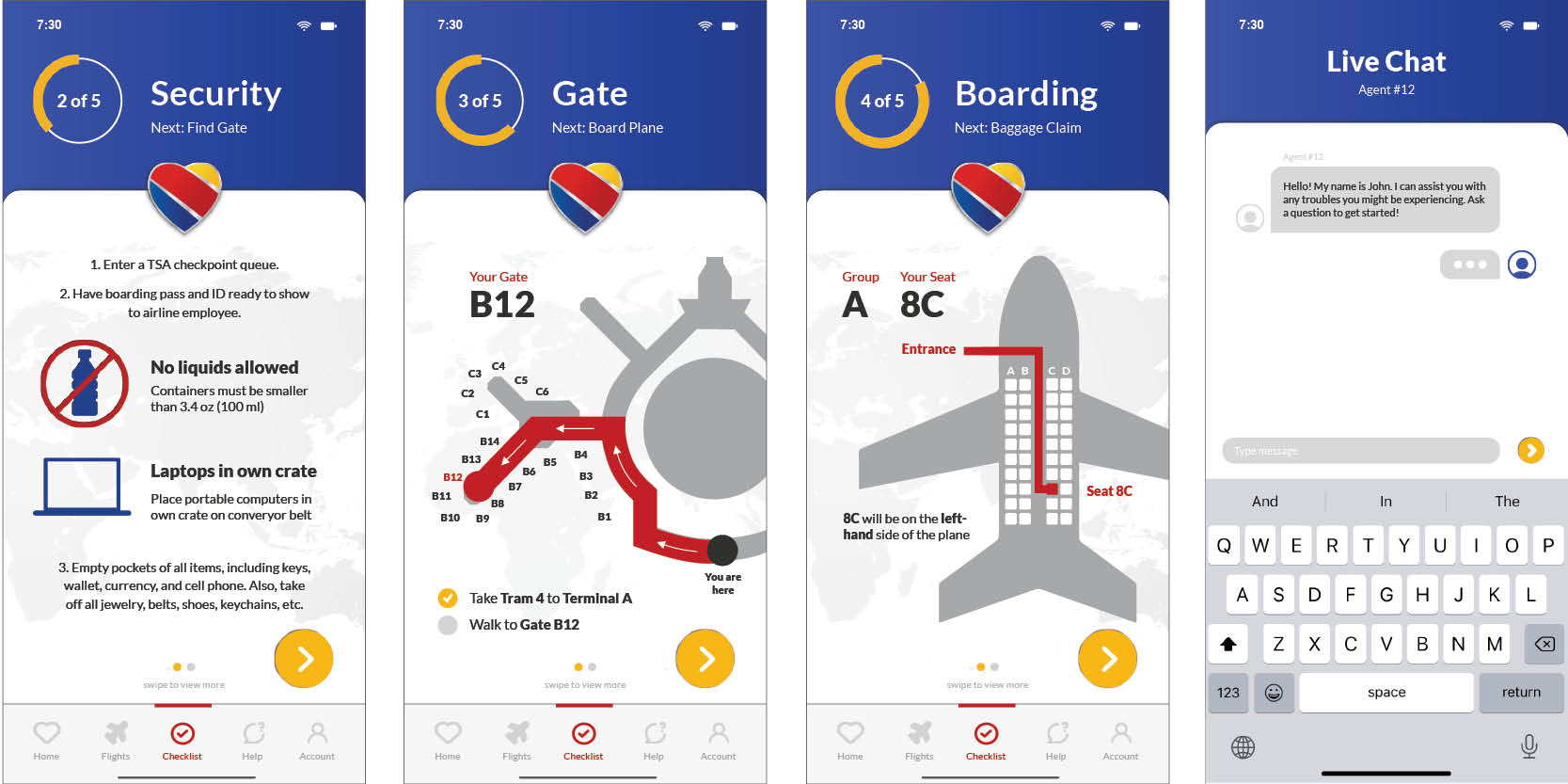 One participant suggested a Live Chat function for those who do not like to ask employees for help in an Airport. This way, users can anonymously ask for help without feeling nervous or anxious.
One participant suggested a Live Chat function for those who do not like to ask employees for help in an Airport. This way, users can anonymously ask for help without feeling nervous or anxious.  While waiting in line, you can view what to expect once its your turn, which will ultimately reduce stress in nervous fliers. Step 3 helps the user navigate to their gate, shows the passenger where they are in the airport and gives directions on how to get to their gate.
While waiting in line, you can view what to expect once its your turn, which will ultimately reduce stress in nervous fliers. Step 3 helps the user navigate to their gate, shows the passenger where they are in the airport and gives directions on how to get to their gate. 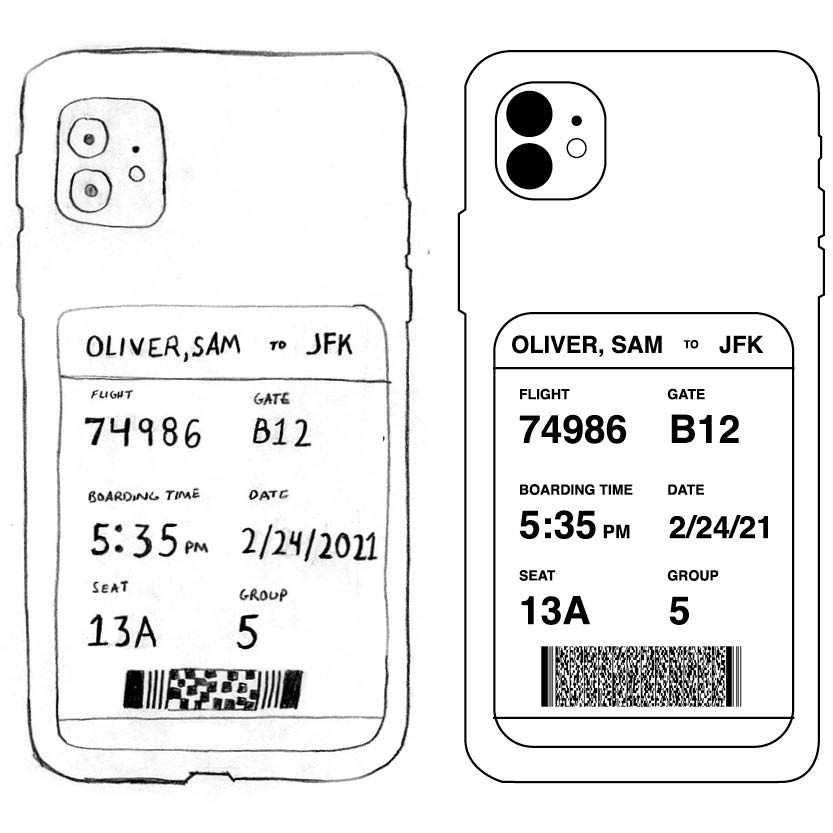 My proposed idea is a sticker consisting of all the information a passenger and employee needs. This sticker can be placed on the back of a phone, on a luggage tag, or any other item a user wants to place it on.
My proposed idea is a sticker consisting of all the information a passenger and employee needs. This sticker can be placed on the back of a phone, on a luggage tag, or any other item a user wants to place it on. 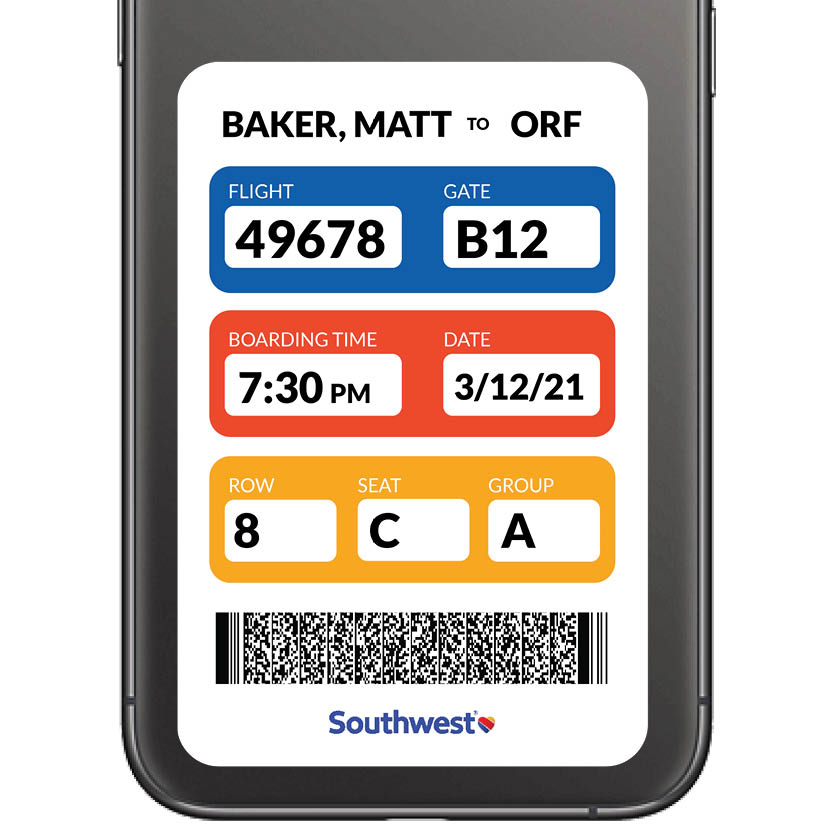 The sticker will also have a bar-code that airline employees can scan to confirm a passenger’s admittance. The bar-code will be printed clearly for scanners to read and access the required information about the passenger.
The sticker will also have a bar-code that airline employees can scan to confirm a passenger’s admittance. The bar-code will be printed clearly for scanners to read and access the required information about the passenger.  I found users like this idea because it eliminates an added article to remember when traveling. One participant said they lost their boarding pass once because they put it in the bag and forgot about it. This solution will reduce the chances of that happening.
I found users like this idea because it eliminates an added article to remember when traveling. One participant said they lost their boarding pass once because they put it in the bag and forgot about it. This solution will reduce the chances of that happening. 
